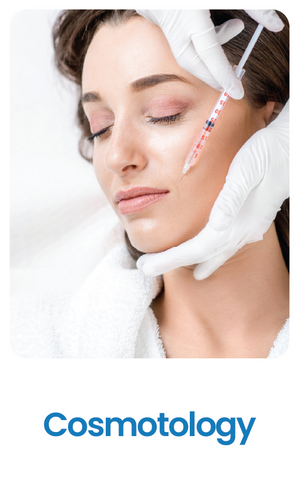Arm Lift Surgery(Brachioplasty) in Bangalore
Arm Contour
Arm contouring, also known as brachioplasty or arm lift surgery, is a cosmetic surgery procedure that restores firmer, more toned, and better-defined arms. It aims to remove excess sagging skin, fat, and tissue from the upper arms. Overall, arm contouring tightens loose skin and underlying tissues using advanced surgical techniques to create more sculpted and proportionate arms.
Generally, patients with significant weight loss or aging-related skin laxity undergo arm contouring surgery procedures. Individuals who have experienced substantial weight loss, aging, or genetic predisposition to loose arm skin can opt for this arm contouring surgery to enhance toned and balanced arm appearance.

.jpeg)
Arm Contouring Surgery Procedure
Brachioplasty surgery usually takes around 2 to 4 hours, depending upon the type of procedure you are looking to undergo. A mini-brachioplasty can take 1-2 hours.
Complete Brachioplasty: In this type of surgery, an incision is made from the armpit to the elbow, typically along the inner aspect of the arm. The excess skin and fat are removed from the upper arm area to reveal the underlying muscle structure.
After the surgery, a dressing and compression garment is applied to reduce swelling and support the healing tissues.
Mini Brachioplasty: Mini arm lift is generally performed to address limited excess skin in the upper arm area using a smaller incision, usually confined to the armpit area.
Extended Brachioplasty: It is a comprehensive procedure that addresses not only the upper arms but also extends to the lateral chest wall and upper back area. The excess skin in these regions is corrected and reshaped.
Preparing for Arm Contouring Surgery
Before initiating the arm contouring surgery, the surgeon will advise you to quit smoking and all forms of nicotine/tobacco products, at least two weeks prior to the surgery and continuing after the surgery.
Certain tests prescribed by your surgeon are required, which need to be completed. A comprehensive medical evaluation is conducted prior to surgery.
It is not advisable to drastically alter your diet before surgery. A well-balanced nutrition plan is recommended to support healing.
You can discuss your goals and concerns with your surgeon to determine the right procedure and prepare for realistic outcomes.
The brachioplasty procedure can often be performed in conjunction with liposuction surgery,

Arm Contouring Recovery

Arm contouring results can be immediately visible, though initial swelling may obscure final results.
The recovery time depends on the surgical technique(s) performed by the surgeon. It can take at least two to six weeks of recovery time; however, patients are advised to take precautions during this period. Post-surgery, patients are required to take time off from work during the initial recovery phase. It is highly advisable to avoid heavy lifting and strenuous arm movements until fully recovered, or upon doctor's approval.
Patients are requested to refrain from all forms of nicotine and tobacco products even after surgery for an extended period to ensure proper healing.
Arm Contouring Side Effects
Brachioplasty procedure carries certain potential risks and complications. When performed by qualified and board-certified plastic surgeons, the end-results are positive, and the overall success rate is impressive.
However, every surgery has its complications, and arm contouring has notable side-effects, which include infections and blood clots, but these are rare. Infection can usually be treated with antibiotics and proper wound care. Patients are recommended to move around and perform gentle exercises soon after surgery to minimize blood clot risk.






